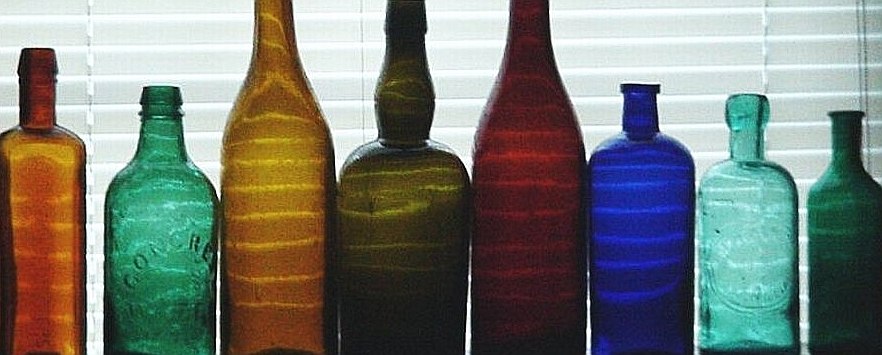The Hazel Glass Company, Washington, PA, in business since 1887, and Atlas Glass Company, also of Washington, PA (dating from 1896) merged to form the Hazel-Atlas Glass Company, Wheeling, WV, in 1902.
Hazel-Atlas eventually grew to become one of the largest glass manufacturing firms in the world, (within the United States, probably second in place behind Owens-Illinois Glass Company) with 14 glass plants operating simultaneously. Plants were located at Washington, PA (two plants), Wheeling, WV; Clarksburg, WV; Zanesville, OH (2 plants); Grafton, WV; Ada, OK; Pomona, CA; Blackwell, OK; Lancaster, NY; Oakland, CA; Montgomery, AL; and Plainfield, IL.
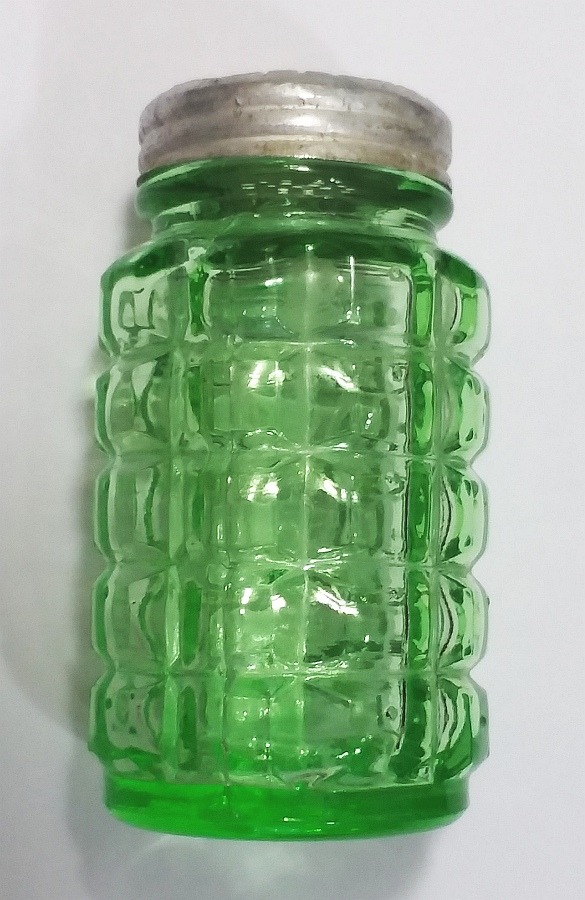

In 1957, Hazel-Atlas became a division of the Continental Can Company. The Hazel-Atlas mark continued to be used, at least on some percentage of their glass products, until approximately 1964, when Continental sold all of the glass plants (except the facility at Plainfield, Illinois) to Brockway Glass Company. The Plainfield plant was later sold to A. H. Kerr Glass Company. (In my own opinion, it is likely, or at least very possible, that the “H over A” mark continued to appear on some containers produced after 1964, since a very large number of molds were then in use, and it would have been a considerable endeavor just to make minor re-tooling changes on all of those molds to erase or replace the maker’s mark.)
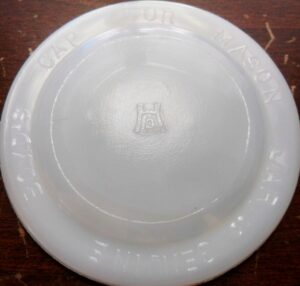
ADVERTISEMENT
Tremendous numbers of white “Boyd” milk glass liners (the miniature round glass “saucers” or discs that fit inside zinc screw-threaded lids, made for Mason-style fruit jars) were produced, as well as canning jars (fruit jars) including the ATLAS jars for general household use; “packer ware” (generic containers for a multitude of common food products such as mayonnaise, spaghetti sauce, mustard, jams and jellies, coffee, peanut butter, applesauce, etc, as well as non-food items like cosmetics, salves, medicines, chemical liquids), as well as a wide variety of other containers for products of every description.

Hazel-Atlas’ well-known makers’ mark consists of a large capital letter “H” with a smaller capital “A” positioned underneath the H, appearing somewhat like a small step-stool or bench situated underneath a table. NOTE: this mark is frequently confused with the trademark used by the Anchor Hocking Glass Corporation. I have noticed items listed for sale by dealers and sellers at antique malls, flea markets (and other venues such as ebay) with labels indicating Anchor Hocking. Anchor Hocking Glass Corporation used an “Anchor logo superimposed over an H” or an “Anchor inside a rectangle”.
The “H over smaller A” mark is stated to have been used beginning in 1923, according to patent/trademark information published in “400 Trademarks on Glass” (1968) by Arthur G. Peterson, page 49. The Hazel-Atlas mark sometimes varies slightly in exact appearance, especially on small bottles where there was little room to engrave the mark into the mold, but in general it is easily recognizable on the majority of glass items. However, on some earlier containers, such as some of their fruit jars, the mark on the bottom may be faint or poorly embossed, and almost unrecognizable even to collectors who are familiar with Hazel-Atlas.
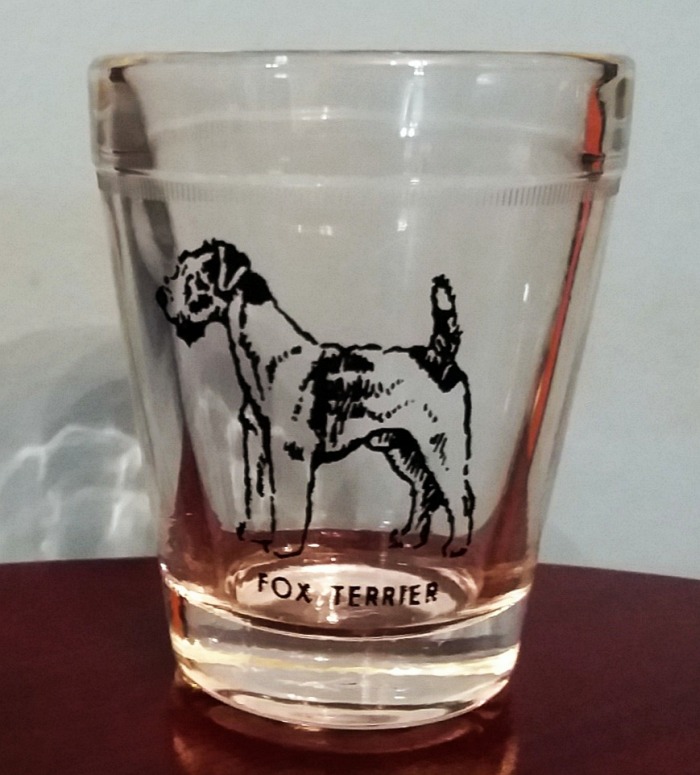
The “H over a smaller A” is probably the second most-commonly seen manufacturer’s mark on glass containers found in typical bottle dumps / trash deposits of the early 1920s to the late 1950s or very early 1960s period, behind the ubiquitous Owens-Illinois mark (i.e. the Diamond and oval superimposed with an I in the center).
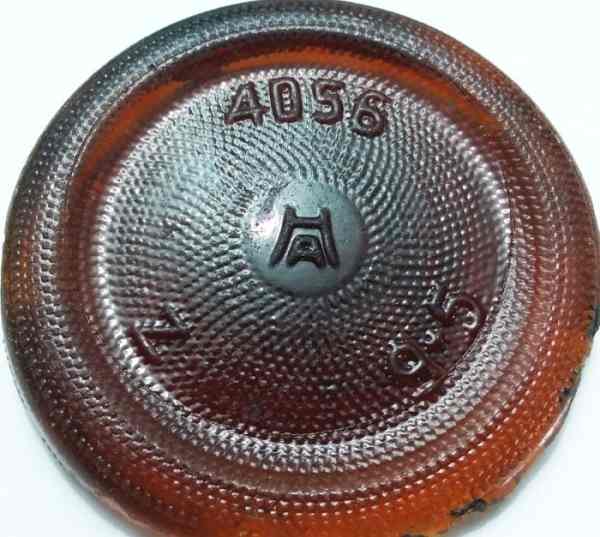
Other marks often seen on container glassware found along with Hazel-Atlas products (especially from 1920s-era dumps) include the “I in a diamond” from Illinois Glass Company, the “O in a square” mark used by Owens Bottle Company and the “Capstan” mark used by Capstan Glass Company.
Chart of Hazel Atlas Glass Co. codes as seen on bases of H-A bottles and jars: Many of the Hazel-Atlas containers I’ve seen do not conform exactly to this chart, but this might be of some help in interpreting the markings on the base of some of their jars and bottles. This chart has been posted on the internet for many years, and the exact time and source of its original publication is uncertain, although it appears to date from about 1959-1960, evidently put out by Hazel-Atlas. It might have been a flyer or information sheet included in a salesman’s catalog literature? This chart was formerly posted on the https://fruitjar.org/ site hosted by the Midwest Antique Fruit Jar and Bottle Club.
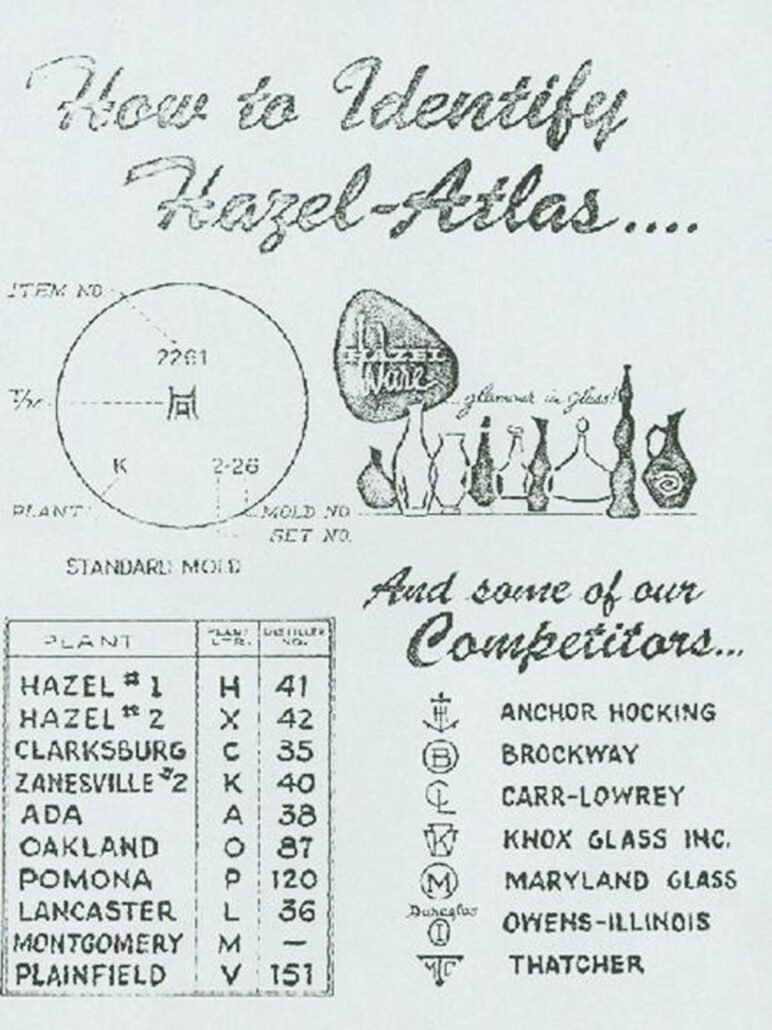
Hazel Atlas produced huge quantities of Depression glass tableware in the 1920s, 1930s and ’40s, most commonly in the typical “Depression era” transparent glass colors of light green, clear (“crystal”), pink and yellow (actually a light yellow leaning toward yellow-amber or topaz). Their green Depression era glass contains uranium, so pieces will glow under a black light. (See my page on Uranium Glass here). Some patterns were also made in cobalt blue and, in a few cases, amethyst. Most of the items in these pattern glass sets were not marked, but are fairly well known and recognized by collectors who specialize in studying tableware patterns of that era. The patterns made include Aurora, Cloverleaf, Florentine No. 1 (Poppy No. 1), Florentine No. 2 (Poppy No. 2), Modernistic (Colonial Block), Ovide (New Century), Newport (Hairpin), Roxana, and Royal Lace. Most of these were made during the early and mid 1930s. (See What is Depression Glass?).
ADVERTISEMENT
In 1936, Hazel-Atlas introduced a type of glass called Platonite, which looks very much like ordinary milk glass but has a more “translucent” or “almost-see-through” quality. Platonite ware was surface-colored by a “fired-on” process, and many shades of color are seen in this type of ware, including yellow, pink, pastel green, light and dark blue, aquamarine, chartreuse, salmon, rust, orange, red, brown, beige and others.
Ovide is probably the most commonly found pattern, and quite a number of colors are found in that pattern alone. Ovide is a “plain” pattern, first introduced in transparent green glass during the early 1920s. The pattern was eventually produced in many of the Platonite colors throughout the 1940s and 1950s. The yellow Ovide creamer shown is marked with the “H over A” trademark on the base.

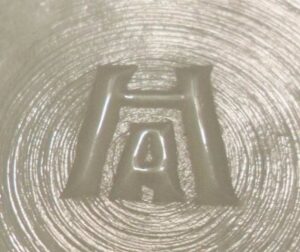
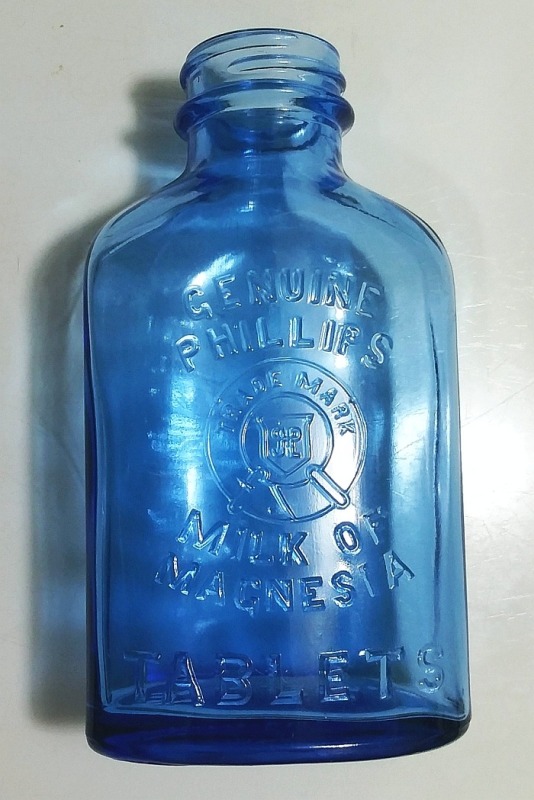
Hazel-Atlas also produced a wide line of “Swanky Swigs”, ACL (applied color label) decorated peanut butter and cold pack cheese packer ware containers over many years, primarily during the 1940s and 1950s. The original Swanky Swigs glasses were made for KRAFT brand food products. These glasses would now be assumed by the average antique mall browser (if they’re not already familiar with them) to have been intended as small “juice glasses” or beverage tumblers. A variety of designs were made, many of them depicting colorful floral motifs or “kiddie” themes such as cute animals.
For the definitive Hazel-Atlas Glass Company collectors site, try checking out this link: HazelAtlasGlass.com .
Here’s a website with information on their “Hazelware”. This particular page gives an outline of the basic history of that line of tableware made at the Clarksburg, West Virginia factory:
https://hazelwareglass.wordpress.com/history/
More background information on Hazel-Atlas Glass Company, especially in relation to their bottle and fruit jar production and markings used, is presented here – check out this PDF file article by Bill Lockhart et al: https://sha.org/bottle/pdffiles/Hazel-Atlas.pdf
Here is a link to a Facebook discussion group devoted to sharing information and photos of Hazel Atlas glassware: https://www.facebook.com/groups/623183837727861/
Please click here to return to the Glass Bottle Marks pages.
Click here to go to my Home Page.
Check out my summary page on so-called “Beach Glass”. Many old Hazel-Atlas bottle and jar bases may be found among beach glass. Sea Glass/ Beach Glass.
Click here to see my page on Artificially Purpled / Altered Glass.
Some other pages on this site that might be of interest to collectors of vintage and antique tableware:
Uranium Glass (including Vaseline Glass and green Depression glass).
Early American Pattern Glass (EAPG)
ADVERTISEMENT

